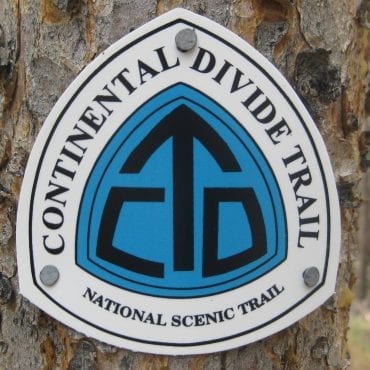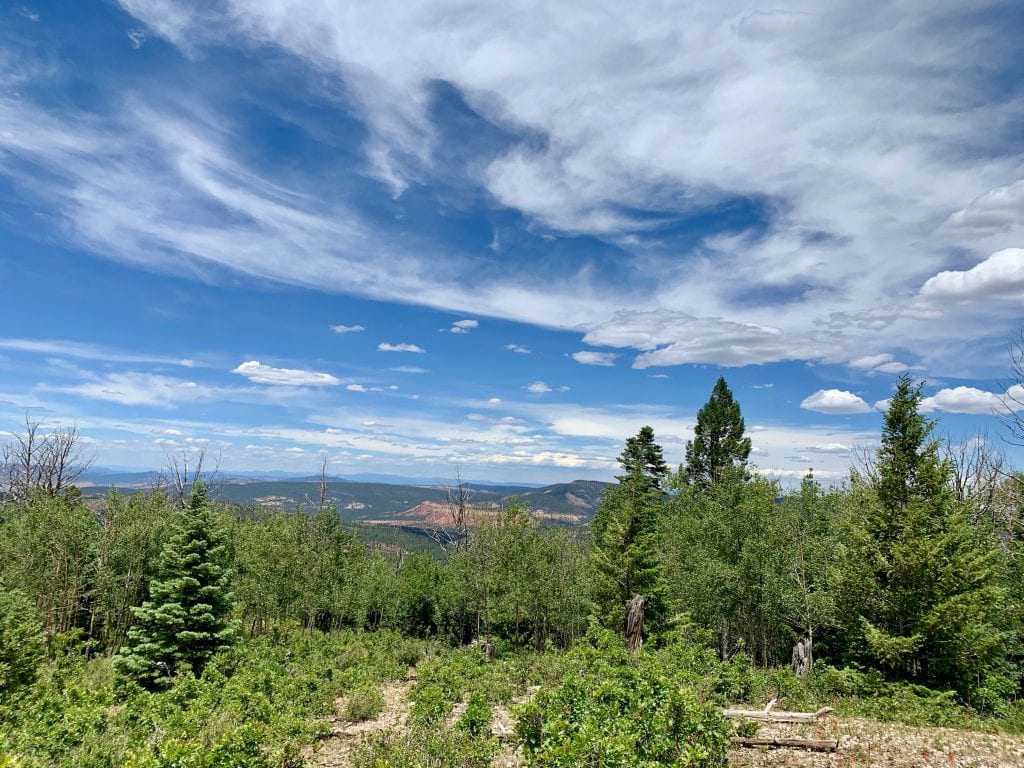This past weekend I was fortunate enough to spend some time exploring a part of my home state of New Mexico that I had never seen before. My dad, my brother, and I drove our bikes north from Santa Fe to a remote section of the Continental Divide Trail situated in the midst of what many know as O’Keefe country. For those who aren’t familiar, Georgia O’Keefe is widely considered one of the most significant artists of the 20th century. Much of her work depicts elements of the high desert landscape: rolling hills flecked with scrubby juniper and pinon, tawny mesas set against a vivid blue sky. She made her home for much of her life in the tiny town of Abiqui, New Mexico, where she drew endless inspiration from the wild colors and austere geography of the land around her. Traveling through O’Keefe country is one of the many spectacular treasures of living and adventuring in the Land of Enchantment.
But what especially inspired me about this outing was the feeling that overcame me as I pedaled my way along the Continental Divide Trail (CDT). (If you’ve never heard of the CDT, check out all the resources provided on the Continental Divide Trail Coalition’s website. They’ve got fantastic maps, photographs, and many opportunities to volunteer your dollars or labor in service of trail maintenance). As we rolled along through the dry, dusty pinon-juniper woodland, I got goosebumps when we came across the first tiny CDT trail marker nailed to a tree. I suddenly imagined the serpentine miles of trail stretching out behind me, winding their way over high Rocky Mountain Peaks and down into rugged river valleys, through New Mexico, Colorado, Wyoming, Idaho, and Montana, all the way to the Canadian border. And I pictured the meandering trail before me, heading south through the Carson and Santa Fe National Forests, past El Malpais National Conservation Area, into Pie Town, where thru hikers and bikers regularly gormandize face fulls of pie at the iconic Pie-O-Neer pie shop (which has sadly closed in the wake of COVID-19), and then making its way deep into the heart of Gila country, before terminating at the Mexican border.
 There was something different about the sensation of being physically connected to the Gila, to that landscape that Guardians’ Greater Gila team is working so diligently to protect, by this rocky stretch of single track. There was no rumbling highway, no roaring semis or reflective road signs. Just these little, unassuming, triangular, blue CDT signs with the arrow forever pointing south, and my own physical body to propel me there. For 42 years (the CDT was established by congress in 1948) this trail has quietly provided a path through the woods for the weary traveler. It has provided a means to reconnect with our original locomotion, to slow to the speed of self-generated action, to move with deliberate willfulness in order to smell the warm brandy-honey-maple-spice of the Ponderosa bark baking in the sun, to listen attentively to the soft tremble of the aspen leaves quaking in the breeze.
There was something different about the sensation of being physically connected to the Gila, to that landscape that Guardians’ Greater Gila team is working so diligently to protect, by this rocky stretch of single track. There was no rumbling highway, no roaring semis or reflective road signs. Just these little, unassuming, triangular, blue CDT signs with the arrow forever pointing south, and my own physical body to propel me there. For 42 years (the CDT was established by congress in 1948) this trail has quietly provided a path through the woods for the weary traveler. It has provided a means to reconnect with our original locomotion, to slow to the speed of self-generated action, to move with deliberate willfulness in order to smell the warm brandy-honey-maple-spice of the Ponderosa bark baking in the sun, to listen attentively to the soft tremble of the aspen leaves quaking in the breeze.
But vast and expansive trails such as this one could not exist without equally vast and expansive forests in which to house them. The incomparably wild stretch of the CDT through the Gila would be something quite different if it was flanked by busy roads with endless industrial traffic, or if it traversed below rapacious mines carving out the mountain side. There is a mutualism between a rugged, unbroken trail and a roadless, unbroken forest. The forest gives to the trail by virtue of providing those of us without wings or four legs an opportunity to cherish a solitude that retreats from our reality with greater rapidity every day. And the trail gives to the forest by reminding us, this hominid species increasingly overcome by our own consumptive power and technological obsession, of the incalculable value of a quiet wood, of our own smallness in a sylvan landscape, of our vulnerability, of our connectedness, of the necessity to protect these wild spaces that fuel and flame the humanity of our spirit.
These are the relationships we aim to preserve in our Greater Gila Campaign. We envision a federally-designated protected status for the entire bioregion that encompasses the Gila and its surrounding mountains, forests, and plains. We know these landscapes are not islands, nor do the wildlife and wild rivers within them exist as such. We need large, connected, protected ecosystems if there is to be a future for humanity moving forward. The science fueling the 30X30 Campaign for Nature says as much. Help us support the woods, the trails, the birds, foxes, wolves, and fish of the Gila by supporting WildEarth Guardians and learn more about our Greater Gila Campaign and the ways you can get involved.
